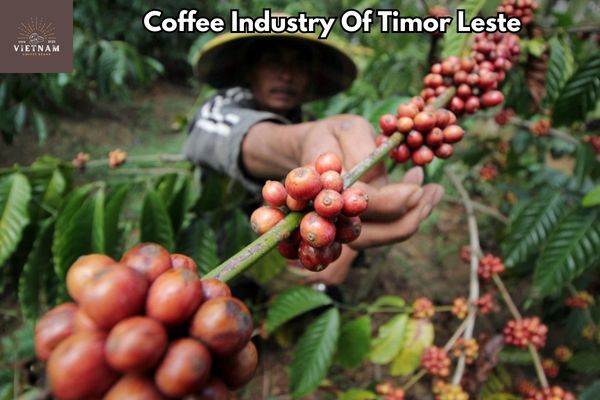I’ve had the pleasure of exploring the fascinating world of coffee production in Thailand.
Since the 1970s, when it was introduced as an alternative to opium poppies, coffee has become a significant industry in the country. With Arabica beans thriving in the north and Robusta beans flourishing in the south, Thailand has become an exporter of high-quality coffee.
Today, coffee cultivation covers a vast area, with the southern region alone producing 80,000 tons of Robusta coffee.
Join me as we delve into the rich history, techniques, and challenges of Thai coffee production.
Key Takeaways
- Thailand started coffee production in the 1970s as an alternative to opium poppies.
- Arabica beans are grown in northern Thailand, while Robusta beans are grown in the south.
- Thailand is currently the 18th largest coffee producer in the world.
- Thai coffee is often blended with beans from Brazil, Colombia, or Ethiopia to manage costs.
History of Coffee Production in Thailand
I learned that Thailand started coffee production in the 1970s as an alternative to opium poppies. This move was a part of the country’s efforts to combat the drug problem and provide farmers with a more sustainable and profitable crop.
The evolution of coffee consumption in Thailand has been remarkable, with the country becoming an exporter of coffee by 1976. Today, coffee is cultivated on over 67,000 hectares of land, with Arabica beans grown in the north and Robusta beans grown in the south.
The economic impact of coffee production in Thailand is significant, especially in the southern regions where 80,000 tons of Robusta coffee is produced, a quarter of which is consumed domestically. This industry has provided employment opportunities and contributed to the country’s economy.
To fully grasp the history of coffee production in Thailand, it is essential to delve into the intricacies of coffee farming in Indonesia, as it serves as a valuable reference point for understanding the cultivation practices, processing methods, and industry developments that have influenced Thailand’s own coffee journey.
Arabica and Robusta Beans in Thailand

Arabica beans are mainly grown in the northern region of Thailand, while Robusta beans are cultivated in the southern part of the country.
Coffee production in Thailand has seen significant growth over the years, with a focus on both quality and quantity. In terms of coffee production methods, Thailand has embraced organic cultivation, making use of highland areas and practicing intercropping with fruit trees in hill areas. The elevation range for coffee cultivation in Thailand is between 800 and 1,200 meters.
As for coffee consumption trends, Thai coffee shops often feature blends with beans from Brazil, Colombia, or Ethiopia, while single origin foreign beans are less common. Thai coffee is also blended with foreign beans to manage costs. Despite the challenges of high import tariffs, Thai coffee remains a prized and sought-after beverage in the country.
When exploring the varieties of Arabica and Robusta beans in Thailand, it becomes evident that Rwandan coffee beans’ overview serves as a valuable reference, providing insights into flavor profiles, processing methods, and sustainable practices that contribute to the success of the Thai coffee industry.
Coffee Cultivation Techniques in Thailand

Shaded areas and open areas with full sun are used for growing coffee in Thailand. The cultivation techniques in Thailand involve careful consideration of coffee harvesting methods and coffee processing techniques.
When it comes to harvesting, coffee cherries are typically handpicked to ensure only the ripest cherries are selected. This meticulous process guarantees the highest quality beans.
After harvesting, the coffee cherries undergo various processing techniques depending on the desired flavor profile.
The most common methods used in Thailand include the washed process, where the cherries are pulped and then fermented before drying, and the natural process, where the cherries are dried with the fruit still intact. These processing techniques contribute to the unique flavors and aromas found in Thai coffee.
As an experienced coffee producer, Thailand prides itself on its attention to detail in every step of the cultivation process.
To enhance the coffee cultivation techniques in Thailand, there is a growing focus on adopting sustainable practices inspired by the success of sustainability in Kenyan coffee production, ensuring long-term environmental preservation and economic viability.
As we delve into the fascinating world of coffee cultivation techniques in Thailand, it becomes evident that understanding the impact of climate on coffee growing in Ethiopia can provide valuable insights and strategies for Thai farmers to navigate their own unique climatic challenges and optimize the quality and yield of their coffee crops.
Organic Coffee Farming in Thailand
Growing organic coffee in Thailand requires careful attention to cultivation methods and the use of natural fertilizers and pest control techniques. The challenges of organic coffee farming in Thailand include the need to maintain soil fertility without the use of synthetic fertilizers, managing pests and diseases without chemical pesticides, and ensuring the quality and consistency of the coffee beans.
Market demand for organic coffee in Thailand is increasing as consumers become more conscious of the environmental and health benefits of organic products. However, meeting this demand can be difficult due to the limited availability of organic coffee beans and the higher costs associated with organic farming practices.
Despite these challenges, many coffee farmers in Thailand are embracing organic methods to meet the growing demand for organic coffee and to contribute to a more sustainable and environmentally-friendly coffee industry.
Coffee Statistics in Thailand

In terms of statistics, it is interesting to note that Thailand ranked 18th in the world for its coffee production.
The country has faced several challenges in its coffee industry, including high import tariffs and the need to blend Thai coffee with foreign beans to manage costs.
However, the future prospects for Thailand’s coffee production are promising. With its diverse regional varieties, such as Arabica beans in the north and Robusta beans in the south, Thailand has the potential to further develop its coffee industry.
The protected designation of origin (PDO) status received by two types of Thai coffee, Doi Tung and Doi Chang, from the EU also adds value and recognition to the country’s coffee production.
With the right strategies and support, Thailand has the opportunity to strengthen its position in the global coffee market and increase its production output even further.
Protected Designation of Origin (PDO) Status for Thai Coffee
Receiving protected designation of origin (PDO) status from the EU for two types of Thai coffee, Doi Tung and Doi Chang, has added value and recognition to our country’s coffee industry. This prestigious status benefits our coffee producers by ensuring that their products are authentic and of high quality.
To obtain PDO status, certain requirements must be met, such as the coffee being produced in a specific geographical area and following traditional production methods. This recognition not only protects the reputation of our unique coffee varieties but also opens up opportunities for increased market demand and premium pricing.
The PDO status brings a sense of pride to our coffee industry, as it highlights the rich history and distinct characteristics of Thai coffee. It is a testament to the hard work and dedication of our coffee farmers and producers who have consistently upheld the standards of excellence in our coffee production.
Import and Blending Practices in the Thai Coffee Industry
I often visit coffee shops in Thailand that offer blends with beans from different countries. These blends are a result of the import and blending practices in the Thai coffee industry.
Thailand has the second highest import tariffs for coffee, making it more expensive to import foreign beans. As a result, coffee shops in Thailand tend to blend Thai coffee with beans from other countries to manage costs. While single origin foreign beans are less common, the combination of local and foreign beans creates unique flavors and profiles.
This blending practice allows coffee shops to offer a variety of options to customers while also supporting the local coffee industry. It’s interesting to see how these local vs. foreign blends create a dynamic and diverse coffee culture in Thailand.
Regional Varieties of Coffee in Thailand
Growing in the northern regions of the country, Arabica beans thrive in the higher elevations of Thailand. These beans contribute to the unique regional coffee flavors found in this part of the world.
Thailand has a long history of coffee production, with Arabica beans being cultivated in the north and Robusta beans in the south. The southern region, particularly places like Chumphon, Surat Thani, and Nakhon Si Thammarat, produces a significant amount of robusta coffee, with a quarter of it being consumed domestically.
Coffee consumption trends in Thailand have seen a rise in popularity, with coffee shops featuring blends that often include beans from Brazil, Colombia, or Ethiopia. Single origin foreign beans are less common, and Thai coffee is often blended with foreign beans to manage costs.
Despite the higher import tariffs for coffee in Thailand, the unique regional varieties and flavors continue to attract coffee enthusiasts in the country.
Challenges and Opportunities in Thai Coffee Production
Facing various challenges, such as climate change and competition, the coffee industry in Thailand presents opportunities for growth and innovation.
The impact of climate change on Thai coffee production cannot be ignored. Rising temperatures, erratic rainfall patterns, and increased pest and disease pressure have affected the overall yield and quality of coffee beans.
However, amidst these challenges, there is a promising market potential for Thai specialty coffee. With the rise of the specialty coffee movement and increasing consumer demand for unique and high-quality coffee, Thai farmers have the opportunity to differentiate themselves by producing specialty coffees with distinct flavors and characteristics.
Frequently Asked Questions
Conclusion
In conclusion, as an experienced coffee enthusiast, I must say that Thailand has come a long way in its coffee production journey.
From its humble beginnings as an opium alternative to becoming a significant exporter, the country has made remarkable strides.
With the cultivation of Arabica beans in the north and Robusta beans in the south, Thailand offers a diverse range of flavors.
The intercropping techniques and organic farming practices further enhance the quality of Thai coffee.
While facing challenges, such as blending with other beans to manage costs, the industry continues to thrive.
Overall, Thailand’s coffee production is a testament to the country’s dedication and passion for this beloved beverage.





